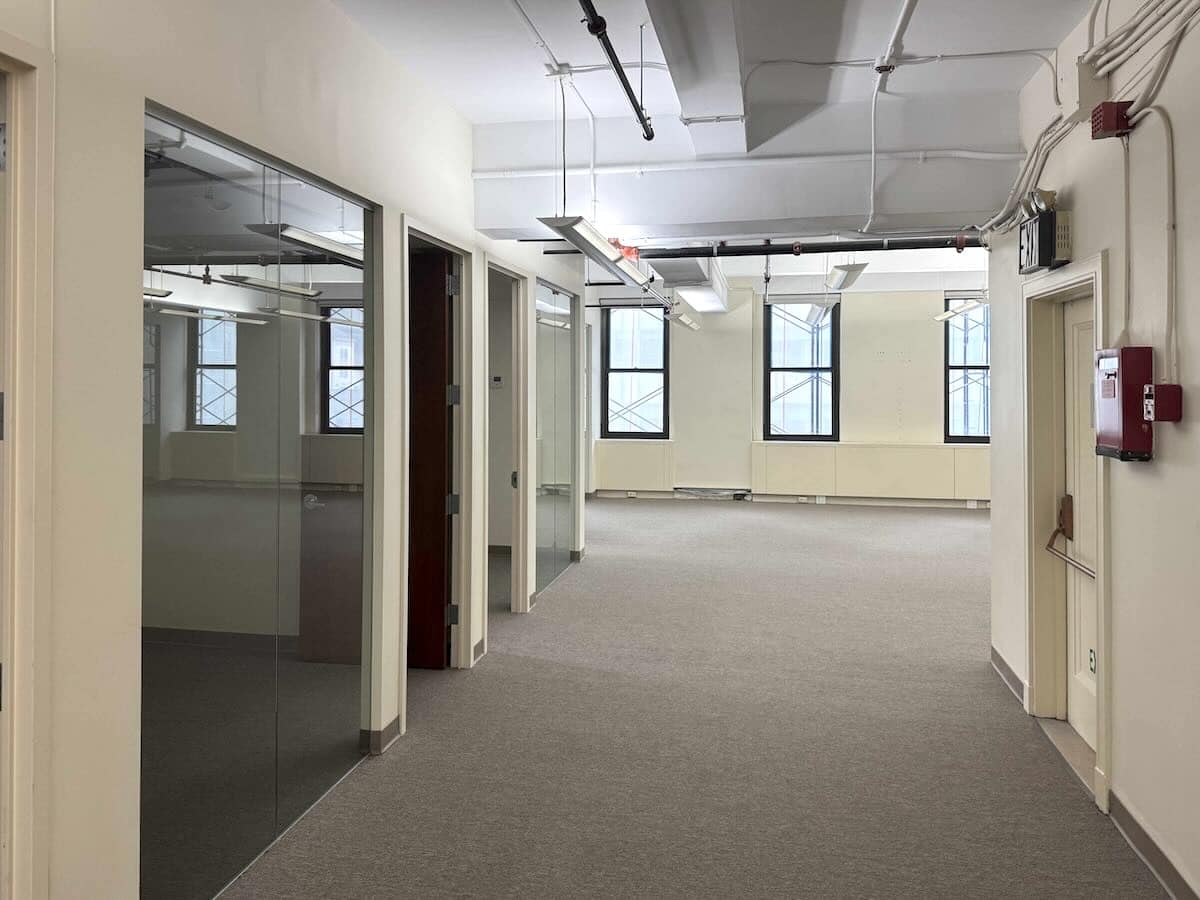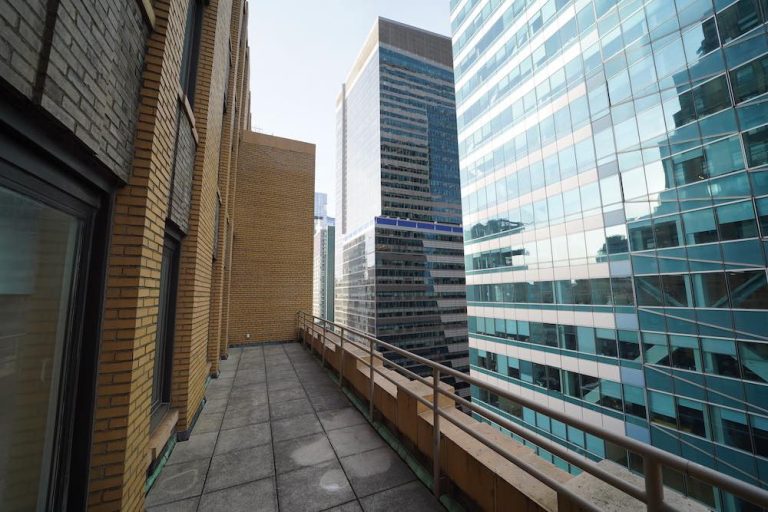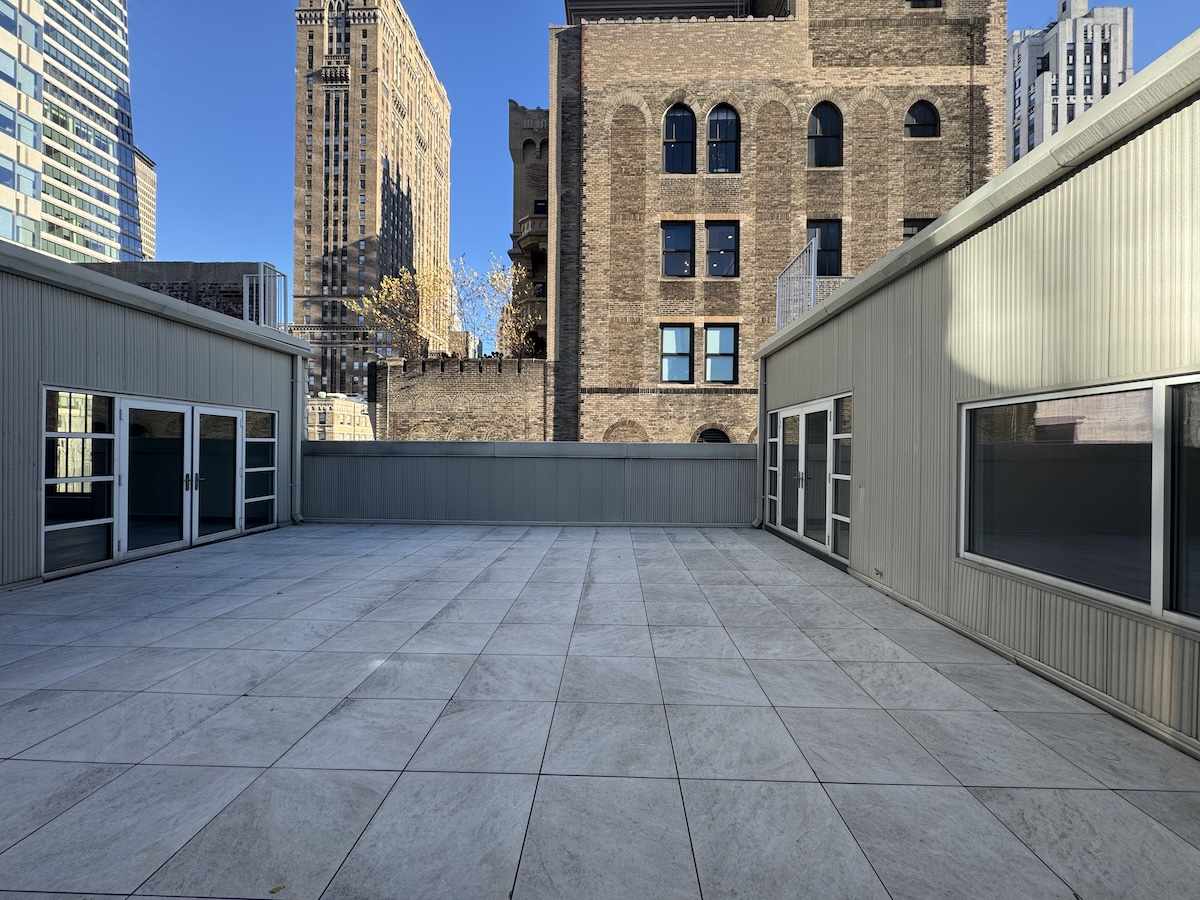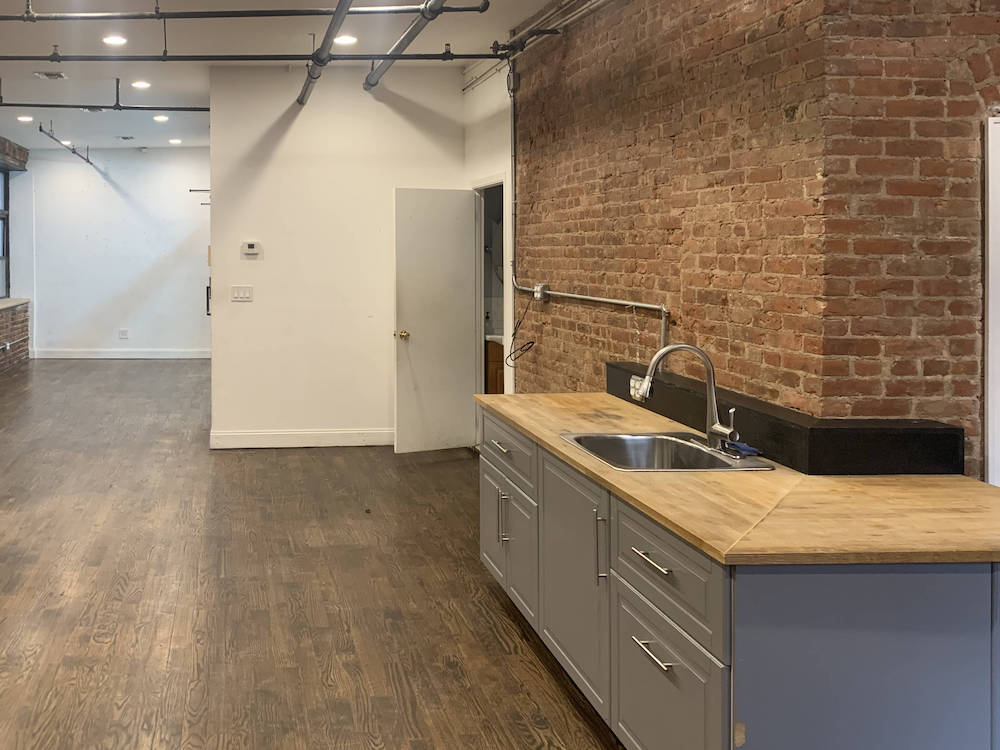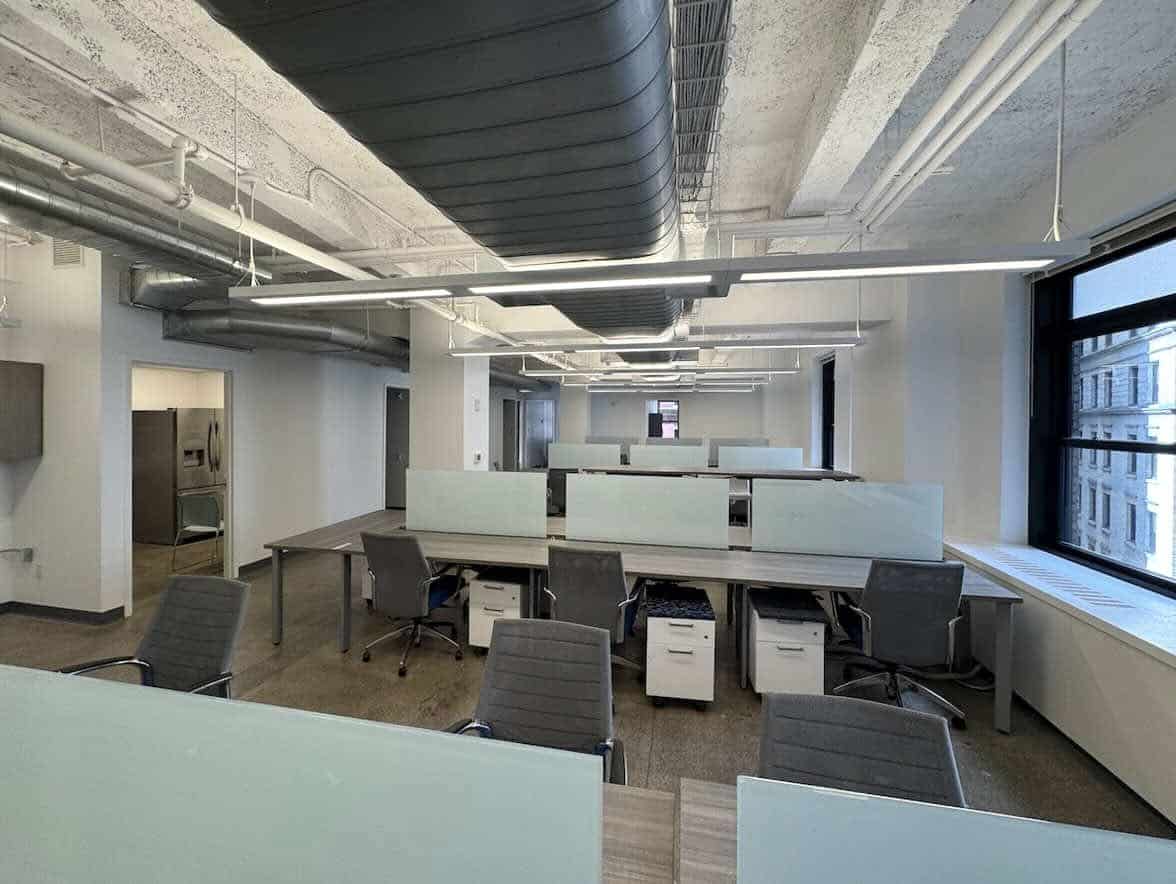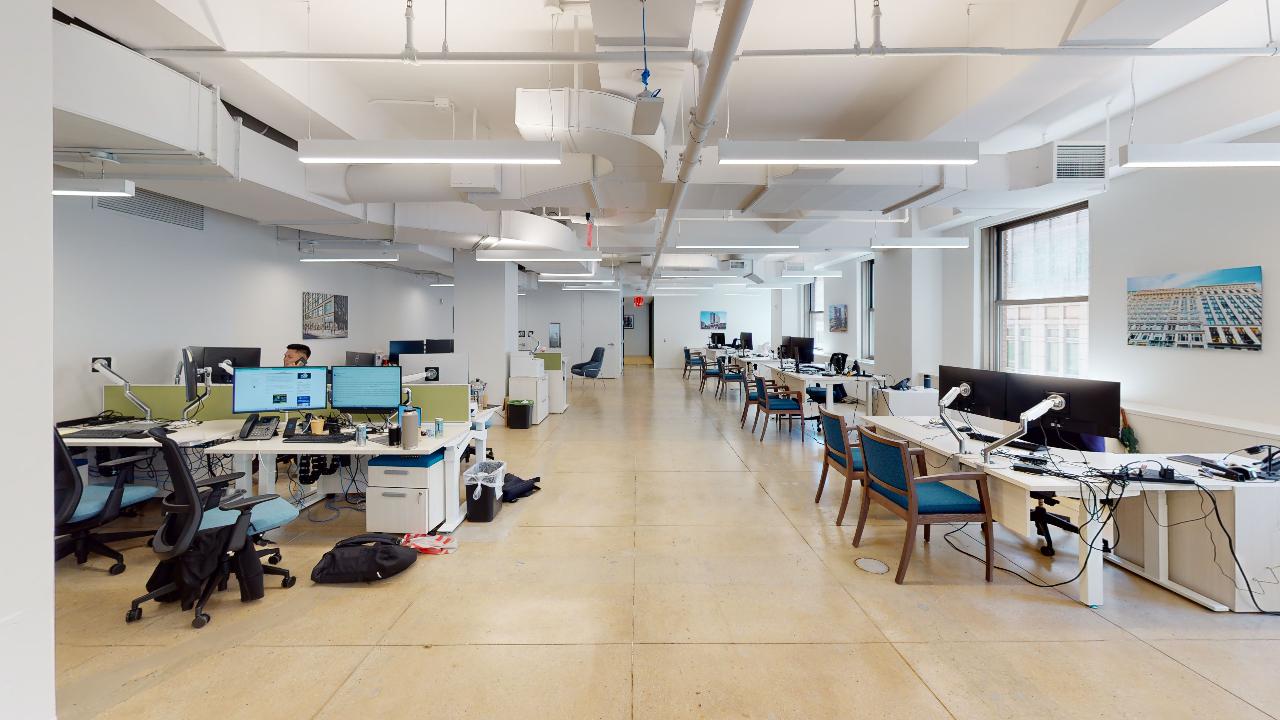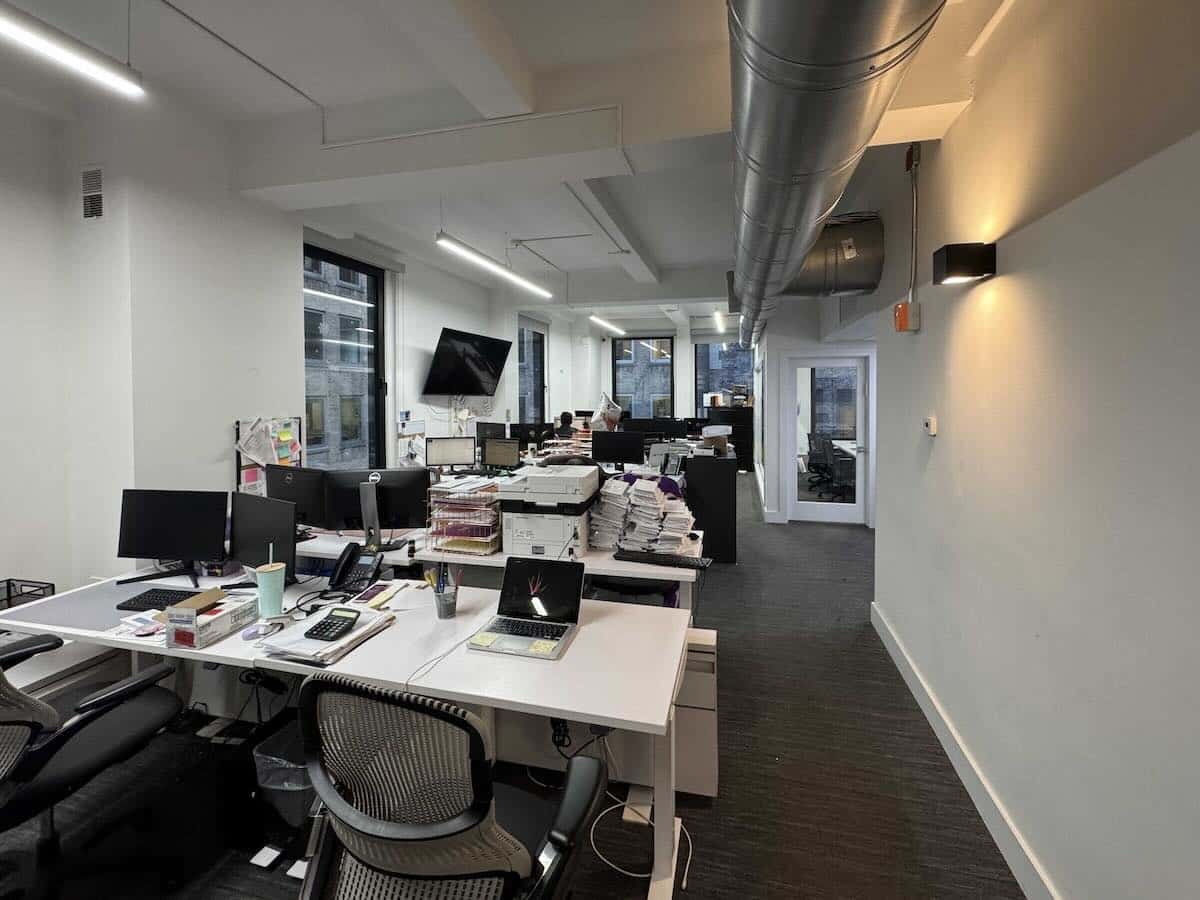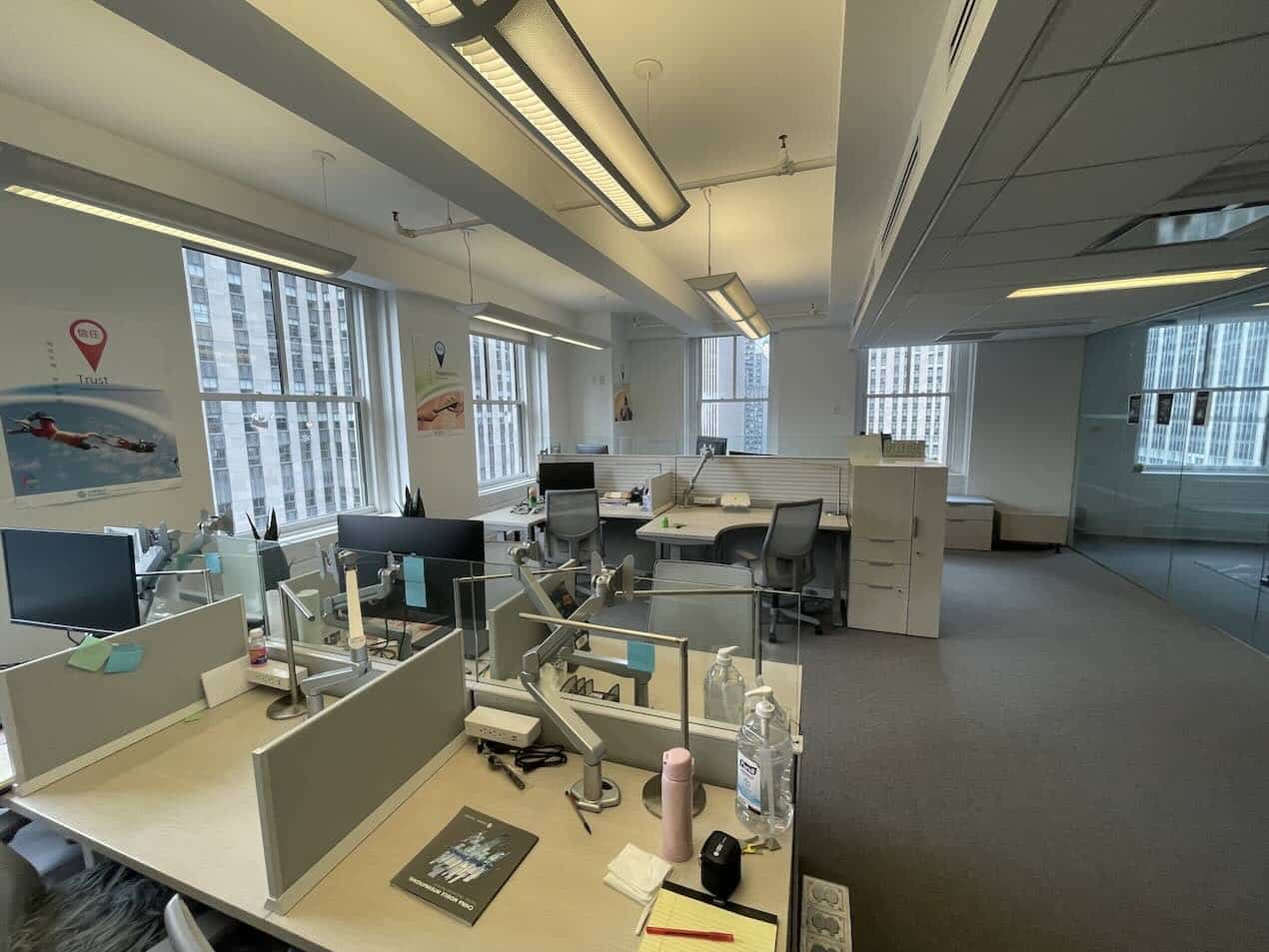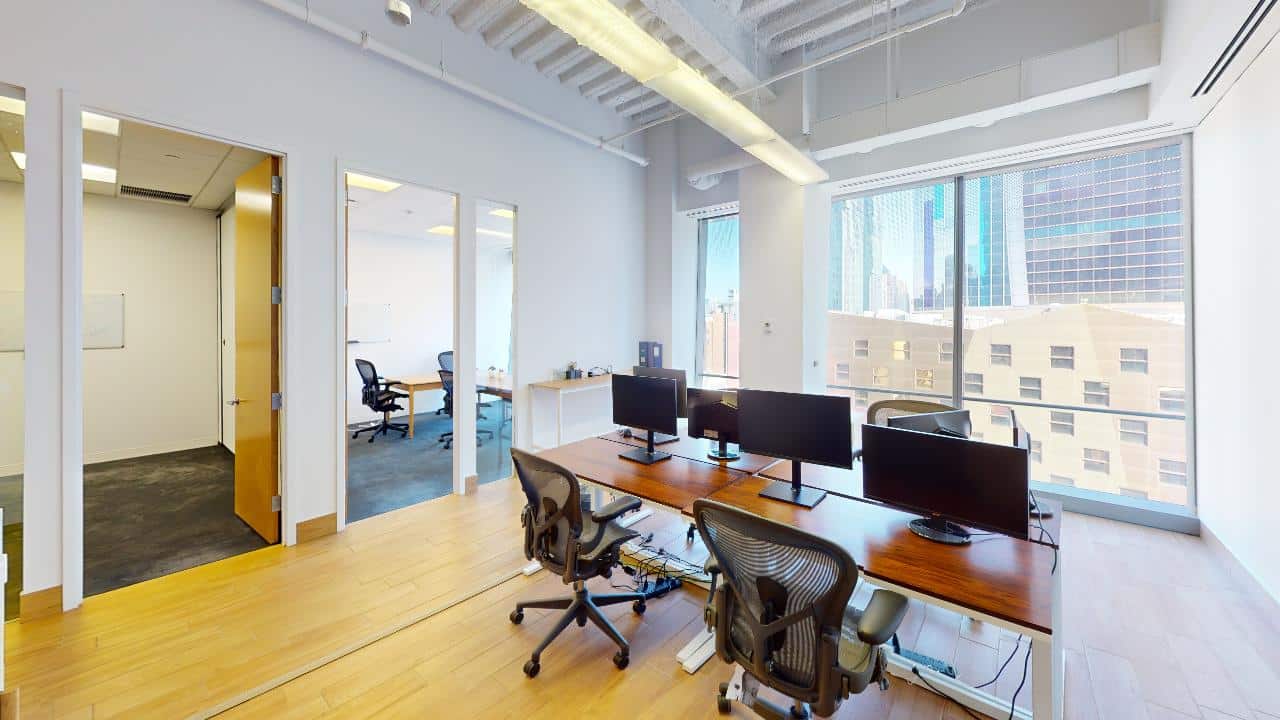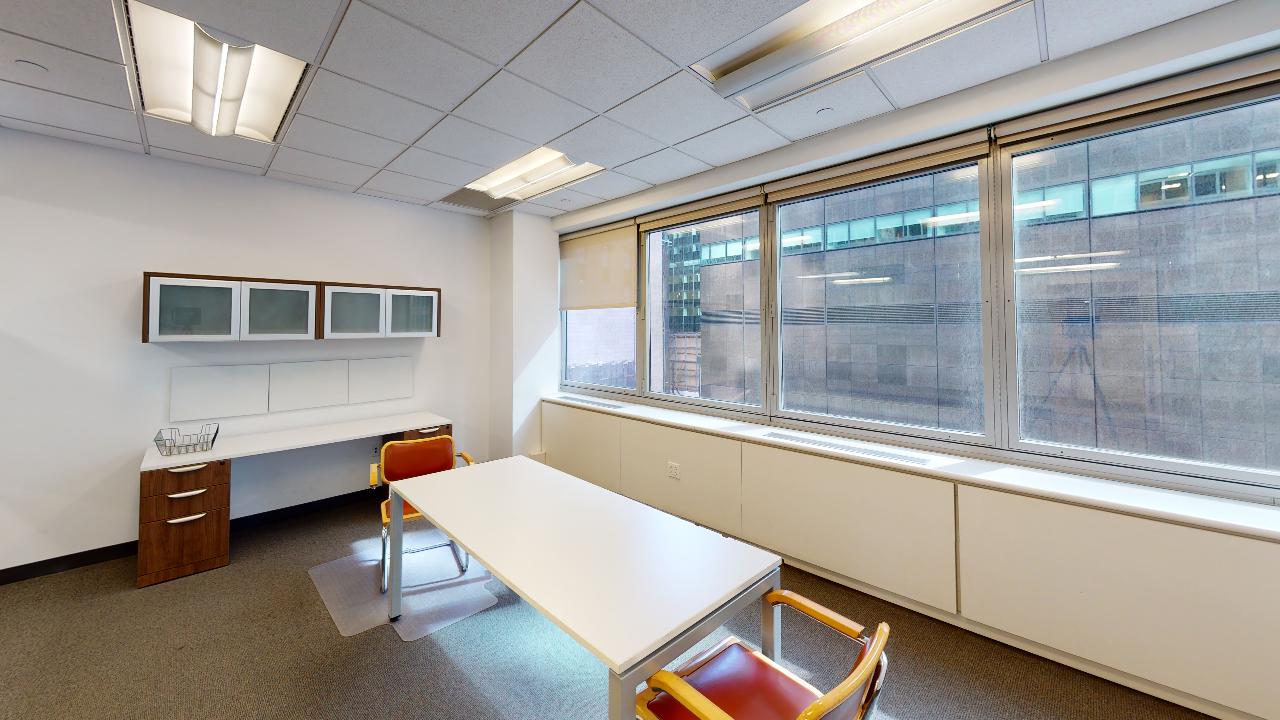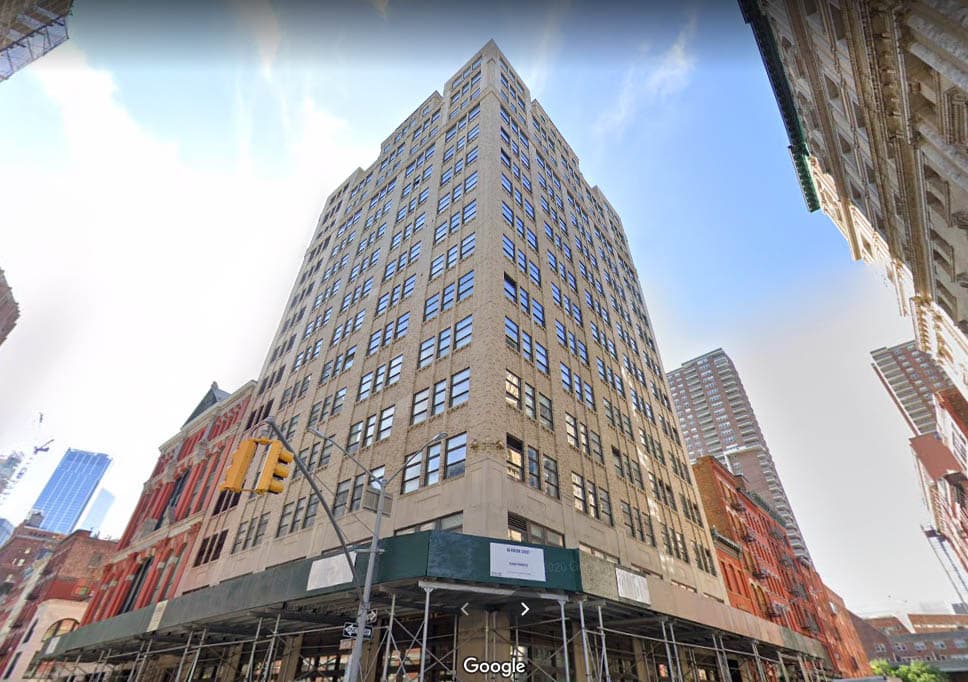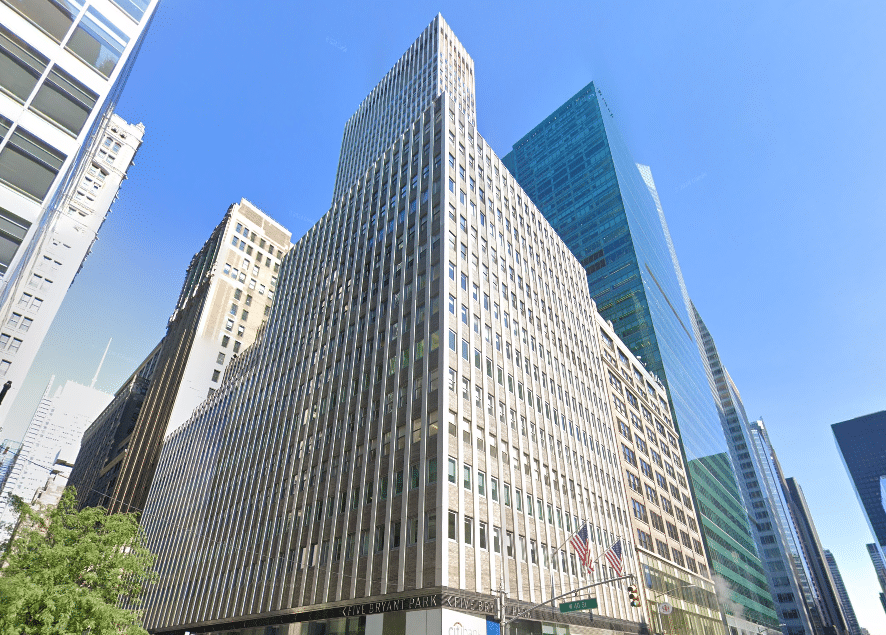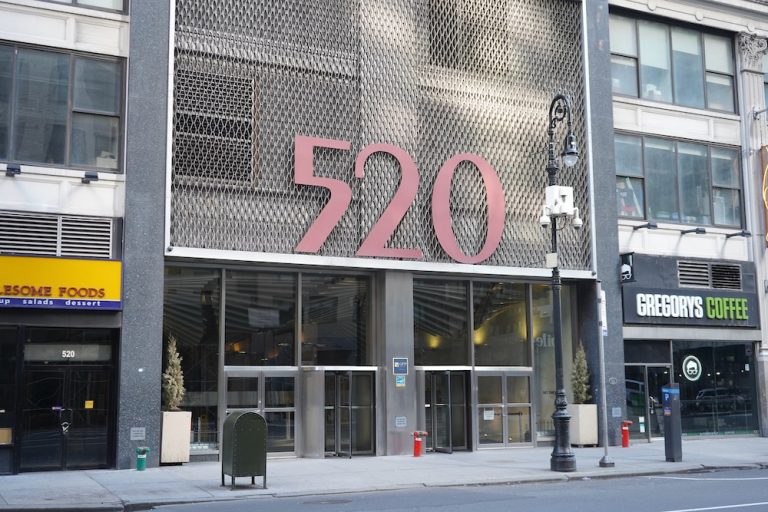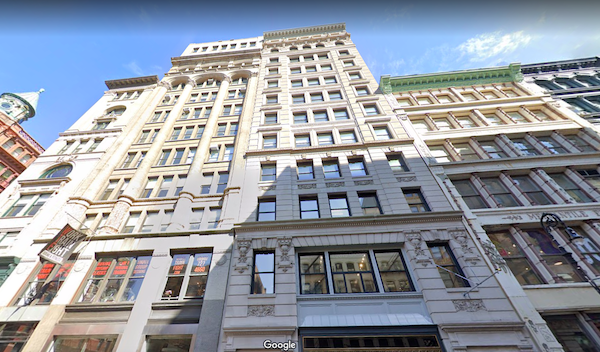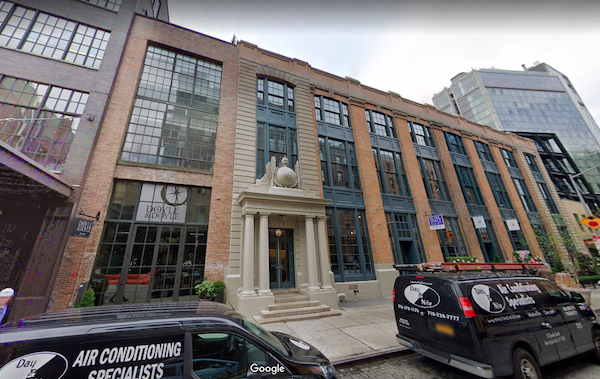New York City’s tech office space market is exhibiting some head-scratching contradictions. On the one hand, it’s red hot. A notable influx of tech companies is flocking to the city, drawn by its dynamic blend of professional opportunities and vibrant urban life. On the other hand, major tech giants are scaling back and reducing their office footprints dramatically. So, with this dichotomy presenting a complex scenario for real estate in one of the world’s busiest markets, how can we make sense of all this?
The Shifting Tide: Tech Firms Flocking to NYC
The first trend we’ll explore is the influx of tech firms relocating to New York City. With a compelling blend of professional opportunities and vibrant city life, what are the numbers and detailed reasons shaking things up behind the scenes?
Understanding the Surge in NYC’s Tech Office Space Demand
Last year, New York City saw an impressive influx of tech professionals, with a 3.6% net gain in its tech workforce. Remarkably, 15% of tech workers moving for jobs across the country chose NYC, and nearly 37% came from San Francisco. This movement highlights the city’s magnetic pull, not just for its career opportunities but also for its vibrant lifestyle, which continues to draw people despite the high cost of living. The numbers don’t just tell a growth story; they reflect a burgeoning community where professionals are eager to connect and create.
Naturally, there’s more demand for office spaces thanks to the influx. In Q4 2023, the city recorded leasing over 10.7 million square feet of office space—the most since pre-pandemic times. It represents a 35% jump from the previous quarter, 13% from the year before, and indicates recovery and optimism in the tech sector.
Why NYC Is Drawing Tech Talent and Companies
New York City’s tech scene is thriving not only because of its dynamic lifestyle but also due to its diverse talent pool and a vibrant tech ecosystem that’s socially and professionally attractive. While the high cost of living in places like San Francisco pushes tech professionals to relocate, NYC is not known as cheap. Instead, many are drawn to NYC for the city’s renewed energy and growing confidence that the workplace culture and opportunities are on the rise. Echoing this sentiment is the city’s record-high addition of 7,300 private sector jobs in December 2023 and a significant spike in tech employment, with nearly 18,000 tech positions added in January 2024 alone. Moreover, AI-related tenants reportedly sought 1.7 million square feet of office space in New York City.
Established and emerging tech firms are complementing this talent influx, either setting up shop or expanding to NYC. Deloitte’s 2023 Technology Fast 500 features New York City tech companies like Fubo, Fireblocks, and Kindbody, which are featured, but that’s only the start. Startups like Lili, a neobank tailored for freelancers, and Firstbase.io, which helps entrepreneurs manage their operations, are thriving here. Meanwhile, the city’s tech-friendly environment also supports innovative firms like Systematic, which connects startups with investors through AI, and RocketReach, a small yet profitable company in high-growth mode.
Tech Giants Scale Back: A New Reality for Office Spaces
The other side of the coin is how major tech companies are now downsizing their office footprints and negatively impacting big cities. This pullback, highlighted by giants like Amazon, Google, and Meta, marks a significant reversal from the continuous expansion seen even during the pandemic’s height. The reasons are multifaceted—increased remote work, financial adjustments, and a strategic reevaluation of space needs.
Tech’s Retreat from Real Estate Expansion
The days of relentless expansion are seemingly over for tech behemoths. For example, Amazon stopped constructing its new headquarters in northern Virginia, and Google is looking to sublease parts of its Silicon Valley empire. Similarly, Meta has reduced its office space substantially from its early pandemic peak. This trend is much more widespread than a few firms; it’s part of a broader strategy to shed excessive office space as the nature of work evolves and more employees opt for remote or hybrid models. Even Salesforce in San Francisco now operates with barely half the office space it did just a year ago, down to 900,000 square feet from 1.6 million.
Consequences for Cities and Real Estate Markets
Tech firms cutting down their office space requirements is profoundly reshaping urban real estate markets. The availability of tech office subleases in 30 major cities has surged to levels not seen in a decade, with 168.4 million square feet available in early 2024. The implications are far-reaching: it reduces property-tax revenue, decreases the foot traffic that bolsters local businesses, and challenges urban planners to reimagine these now quieter commercial spaces. In Seattle, for instance, a once-thriving office building where Amazon was a major tenant is bracing for a potential sale at just a quarter of its value in 2019.
Where Do We Go From Here? Balancing Office Space Demands and Trends
So, with all that said, New York City’s office real estate market is caught between two significant trends: an influx of tech tenants and their decreasing need for large office footprints. With landlords and developers challenged to balance these conflicting narratives, what could the future look like?
Adapting to New Market Realities
Shifts in work patterns have led many companies to embrace hybrid models, creating a demand for smaller office spaces. In Manhattan, the first quarter of 2024 saw 6.1 million square feet of leasing activity, a slight 3.4% decrease from the previous year and a sharper 27.6% drop from 2022. Despite this, the overall leasing included 66.6% in new leases or relocations, signaling a still active market.
Moreover, the average duration of a commercial office space lease for Class A space has increased by 14.9%, from 97 to 112 months. Driving this? Landlords offering significant concessions to secure longer commitments. Meanwhile, Midtown saw a supply increase to 39.22 million square feet, with a modest reduction in availability of 3.3% since the first quarter of 2023. Consider also some of the exciting new construction activity occurring now and in the future. Note also how trophy buildings continue to outperform and keep the flight to quality going.
Future Directions and Strategic Responses
As New York City’s tech office space market sees shifts from both ends—big tech companies scaling down and small startups moving in—the future direction hinges on how well the city’s real estate can adapt and respond. The growth of smaller tech companies, while not without risks, signals a promising dynamic. These fledgling companies often begin in compact office spaces but as they evolve, just like tech behemoths such as Google and LinkedIn once did, their expanding needs can significantly fuel demand for larger spaces. This cycle of growth represents not only a recovery opportunity for NYC’s office market but also a blueprint for future development.
In response to this evolving scenario, strategic flexibility and technological enhancement become paramount. Landlords and developers must offer office spaces that can easily adjust to varying sizes and technological demands. Think modular offices that can expand as companies grow, equipped with cutting-edge technology infrastructures. Furthermore, crafting lease agreements with the potential for expansion and providing amenities that cater to a tech-savvy workforce will be crucial. These efforts will not only keep the real estate market resilient in the face of major tech downsizing but also attractive to the next wave of innovators. As NYC goes, so might other major cities, so it should be interesting to see where things go.
Final Words
New York City’s tech office space market reflects a dynamic yet cohesive shift, where the traditional titans of tech are downsizing their physical footprints in response to the rise of remote work, while a new wave of smaller, agile tech firms flood into the city, drawn by its unmatched vibrancy and vast opportunities. This isn’t so much a contrast as it is a realignment: larger companies are optimizing their space to suit a new working era, potentially increasing vacancy rates and reshaping the market. At the same time, incoming smaller entities boost demand, filling these emerging gaps.
So, as the tech world’s footprint in NYC continues to evolve, so too will the opportunities and challenges it brings. Stay tuned for what happens.



